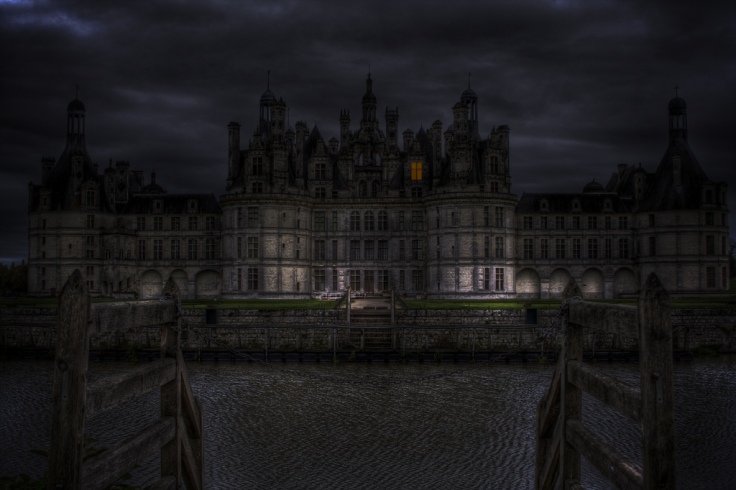As I said before, I played two games invented by my friends McClain and John. McClain’s game was a survival-horror genre game that had shor
t and simple limitations. John’s is a fantasy mash-up “4th wall” game that is long and comes with a limitless number of customization options. Here I’ll give a few details about how they went:

McClain’s Haunted Castle Game:
- McClain’s game is designed to be a 2-hour “one-shot” campaign. If the players cannot find a way out of the haunted castle before the end of session, they lose.
- Each character is simply one of three classes (fighter, rogue, athlete) and only two starting items. Items included a sword, a rope, a torch, a set of armor, and a lockpick. No other character customization is allowed. By making character creation this simple, a player’s character is defined mainly by their actions during the game.
- The Game begins with every character waking up in the central hallway of the haunted castle, presented with four doors. To make communicating in long distance simpler, McClain added that each character was “telepathic” and that every character has knowledge of what the others were doing. In short, the goal of the game is to find a way out of the castle. While things in the castle will try to attack the player, the player is also on a time limit. Every turn, a “darkness” creeps through the castle’s rooms. If the darkness fills the entire castle, it is game over for any character left inside.
- Along the way players find ghosts, skeletons, gargoyles, and spiders to fight while also solving riddles with their items. There were no hit points or stats to measure fights, but fights and actions were both performed pass/fail as determined by a single D20 roll.
- In my experience, I enjoyed the fact that the simple layout made the game easy to jump into. There was also the combat and action system, which seemed both simple because it was just rolling a single 20-sided dice, but annoyingly unclear due to no one except McClain knowing what the rolls would mean. Each of our players traveled in a different direction, which gave the house a sense of enormity and unknown-ness. It became quickly clear that there was more than one way to win the game since there was more than one series of rooms in the castle.

John’s 4th Wall Defense Initiative Game
- John’s game is designed to be a long campaign involving several sessions. We only got a pilot session in, but over time the story could have progressed and involved more branches of John’s main plot. At the end of the session, John just left a note of the group’s progress.
- The story of the game is set within the “multiverse” of all fictional worlds as well as the real world. In some worlds, there exist background characters that are not important enough to be mentioned in the stories of their fictional work. These characters instead serve as guardians of balance in the multiverse, making sure our world or any other world does not blend into theirs. They make up the Fourth Wall Defense Initiative (FWDI), a kind of police force for all of existence. The story follows a group of FWDI agents who are pulled briefly pulled into our reality by an unknown enemy. This enemy manages to shatter the barriers between the worlds. Now, pursuing a
- Character can be invented from anything you can possibly think of from any genre of fiction, so long as it is not an already existing one. Along with with freedom to make any kind of powers and items that go with them.
- You also may assign stats as well, in the categories of strength, speed, intelligence, wisdom, endurance, sneaking, close-combat, long-range, charisma, magic, defense, and dexterity. Each ability helps with different combat and non-combat actions. Speaking of actions, every player and non-player character is allowed to do a single action during their turn.
- The game began with an hour of character-creation, in which everyone completed a character sheet and gave their character sheet to John for him to process. John balances the stats of each character’s powers. For instance, I made up a magic power called “deathwave”, which John calculated as “(aoe, 1d12 for 1d6 turns)”, meaning it would do a number of damage points according to the result of a twelve-sided die for a number of turns equal to the roll of a six-sided die.
- In terms of my experience, the game occasionally was quite slow during character creation and while other players made turn decisions. I think this was mainly because the fourth wall game has a great deal of freedom, and with it a lot of ambiguity. This also added to the challenge and fun of it. When I was playing on my turn, I mainly kept asking myself how can I explore the world, and what the action that would make the most sense would be.
